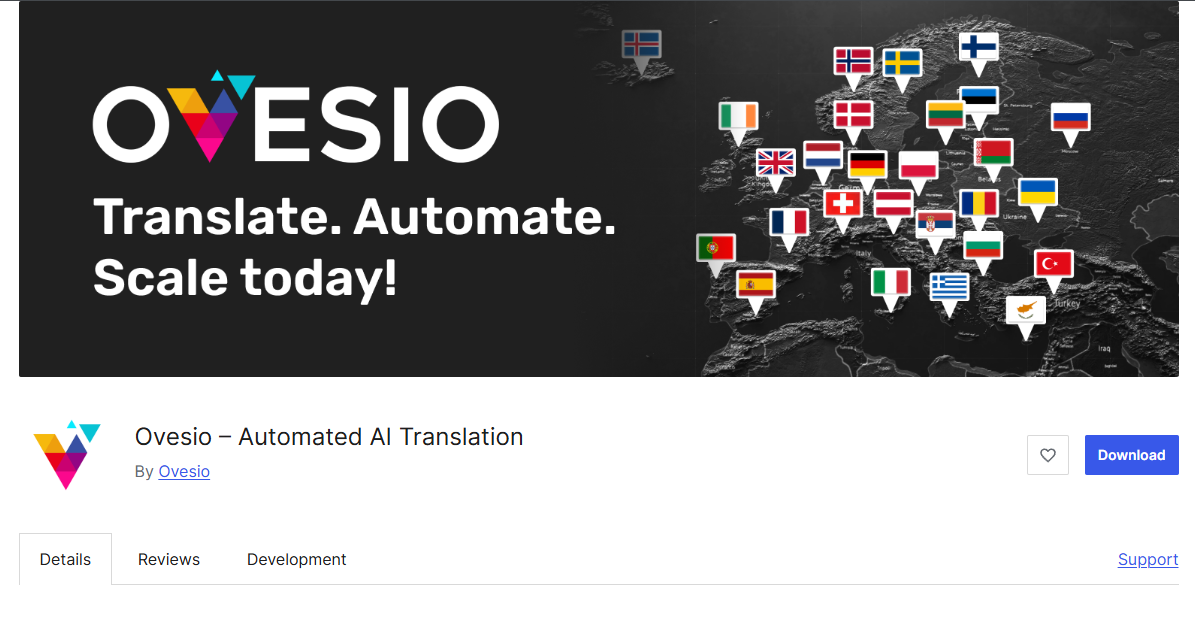Ovesio Cost Calculator Explained
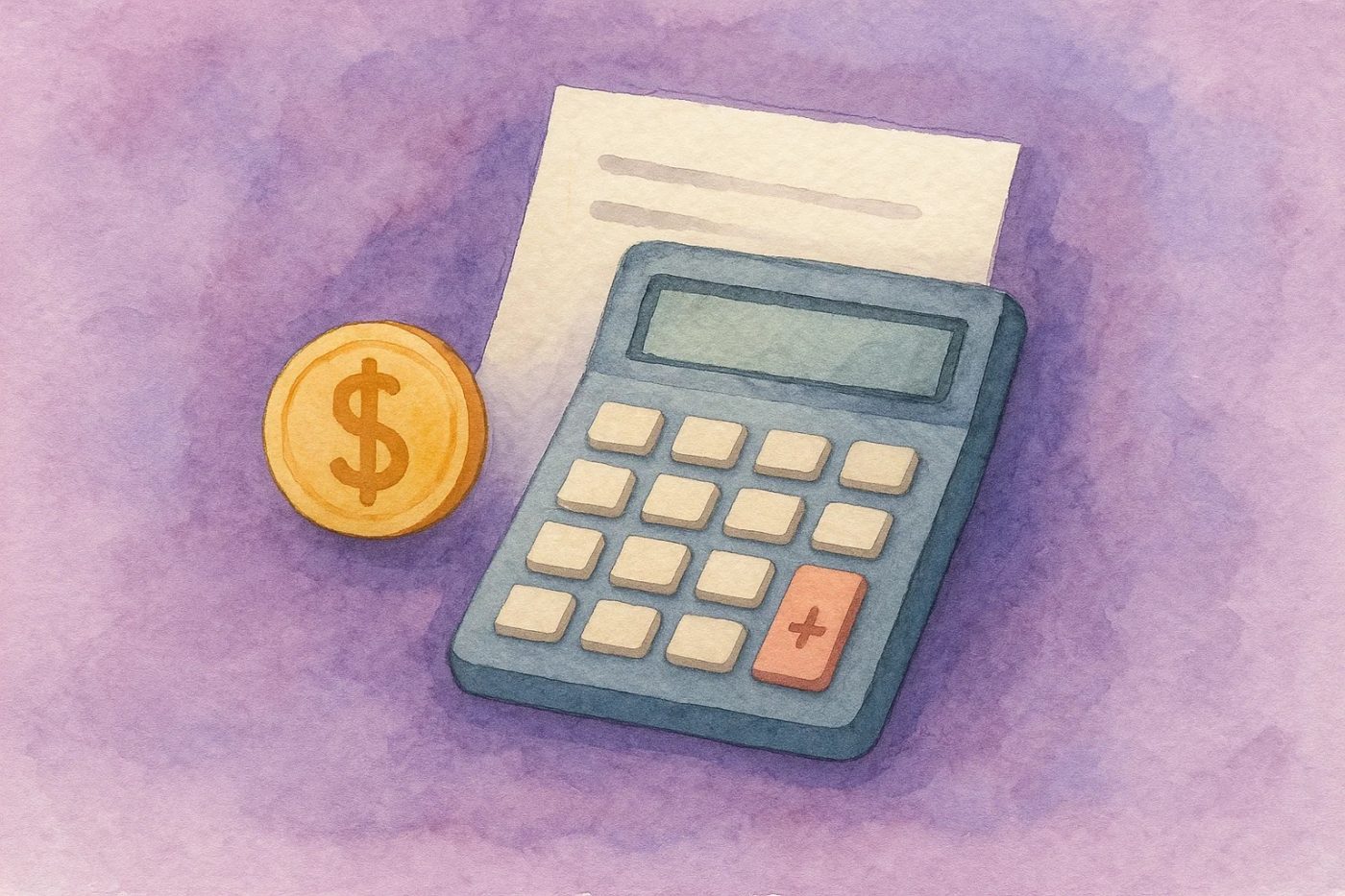
The number of credits used per operation depends on the volume of text, the AI translation models selected and the number of languages
There are several factors that will influence your credits cost, which can increase or degrease the usage.
This article’s role is to clearly explain how you can increase usage purposefully to get better results, and how to decrease usage in a way that will save you credits without sacrificing quality.
AI Translation Costs
First, let’s talk about the AI translation side of Ovesio, and then we will get into the AI Content Machine and the Multilingual Search Engine Optimization System.
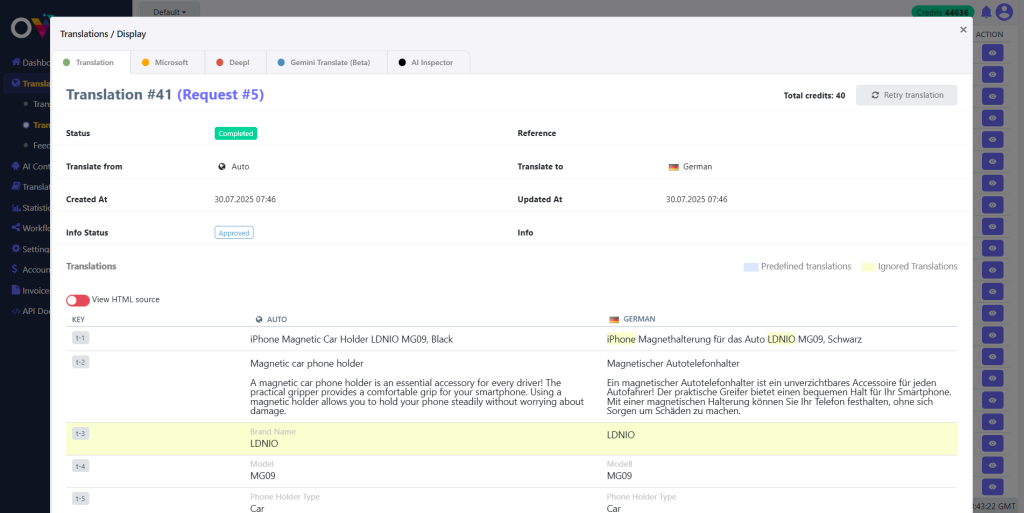
Decreasing Usage
The goal with decreasing usage is to bring balance between costs and quality, the goal being to get the best results with the smallest cost possible.
This section is about optimizing costs, without sacrificing quality.
Usage can be decreased by:
Adding Ignored Words
Ignored words will be help you save on credits because not all words must be translated. One of our clients sells Refurbished Computers in the European Union, and he has lots of products with texts like “Intel Core i7-14700k” which is the same in absolutely every single language
It might not seem that much, but that’s 1 credit.
Multiply that by 4 translators, and then for 27 languages, and you get 108 credits.
Then let’s say you have 1,000 products that that component, you will get to 108,000 credits which would be absurd.
Instead, you can set it as an ignored word so it will always be the same in every single language, and save on tons of credits.
Add Pre-Translate Words
Let’s say you want to translate a word from English to another language, like French.
The word “core” in English can be represented by 6 different words in French.
But since you know there will always be the same meaning behind that word, you can set a pre-translated word, so “core” will always be translated to “cœur”.
This simple setting can save you tens of thousands of credits on the long term, and make your translation process even more cost-efficient.
No Re-Translations If Content Is Not Changed
Let’s say you want to change the alignment of your product description or just add some spacing between paragraphs.
As you know, Ovesio’s AI Inspector makes content management automatic and whenever the original is changed, the translated version will change automatically.
But in this case, you just added some spaces and changed the alignment. The actual content didn’t change.
So, you won’t be charged and no re-translation happens, as long as the content is still the same.
Safety Net For Code Errors:
Let’s say you have a development team, and you want to integrate Ovesio into your store without our help.
To make your life easier and to help you save money and prevent any costly mistakes made by a newbie engineer, we have set a few safety nets for developers.
The same content cannot be translated multiple times in parallel, so if your developer sends multiple translation requests at the same time to translate the same text (recognized by a reference ID) it won’t go through.
All the translation requests after the first one will wait for the first one to complete, and if the input content of any secondary translation requisition is the same with the initial one, it won’t go through, because this would be clearly a mistake.
Another safety net is for the errors of the translators.
If a translator, for any reasons, crashes and refuses to give an output, we will attempt to get an answer 3 times, but you will be charged only one.
Increasing Usage
If you want to use Ovesio to the max and benefit from all its translation features, you can do it by:
More languages are selected
Cost is multiplied by the number of languages.
More translators are invoked
Cost is multiplied by the number of translators.
More characters and larger texts are inserted
Usage is based on the total number of characters that can be translated, calculated using the UTF-8 conversion.
HTML code can also be inputted, but dues to the HTML specific tags like <h1> <div> <section> etc. the cost will go up because these characters are counted as well.
It is important to minimize the text sent to ensure efficient consumption of the credits.
Context Is added
For some translations to be accurate, sometimes there’s a need for context and whenever context is added cost goes up.
Context characters are also taken into account as characters.
AI Content Description Generator
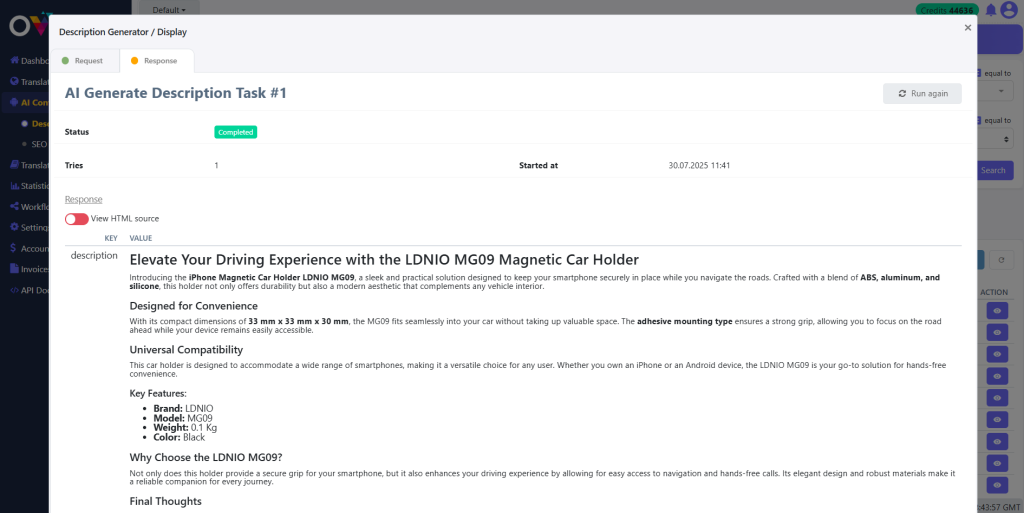
Why is the description so important?
It can make the difference between a sale and a lost customer because products without descriptions don’t look legit.
Believe it or not, there are countless ecommerce stores that try to go multilingual and out of laziness when listing products in different languages, they leave the product description empty.
With Ovesio you can avoid these awkward situations that will make you lose conversion and the trust of your users.
Credit usage is based on the context provided for generating the description, and the output provided.
The longer and input and the output, the bigger the usage will be.
By default, Ovesio AI is optimized to keep the descriptions short, but it also knows to recognize them more context is needed in order to guide the visitor towards a purchase.
Our recommendation is to provide as much context as needed.
If you’re selling Printer Cartridges and things similar that don’t have that many specifications or selling points, the title and category might be enough. (added as additional text)
Similarly, when selling laptops with specifications in the title.
An example is “Lenovo LOQ Gaming Laptop – NVIDIA® GeForce RTX™ 4050 6GB – 15.6” FHD Display – AMD Ryzen 7 8845HS – 16GB RAM – 512GB SSD – Windows 11 Home, Luna Grey”
Oversio can generate a great description out of this.
But let’s say you’re selling “Samsung SyncMaster B2240MW Refurbished Monitor, 22 Inch LCD, 1680 x 1050, VGA, DVI”
Without the extra context from specifications, the description would not be complete. Our AI cannot predict things like brightness, color reproduction, viewing angle, response time, and many other details.
But shoppers care about these things, and they must be added in the description of the product.
In this example, more context is needed.
If the product includes clear specifications, well-defined categories and a suggestive name, the description will be more relevant and convert better.
AI Generator for Multilingual SEO Meta tags
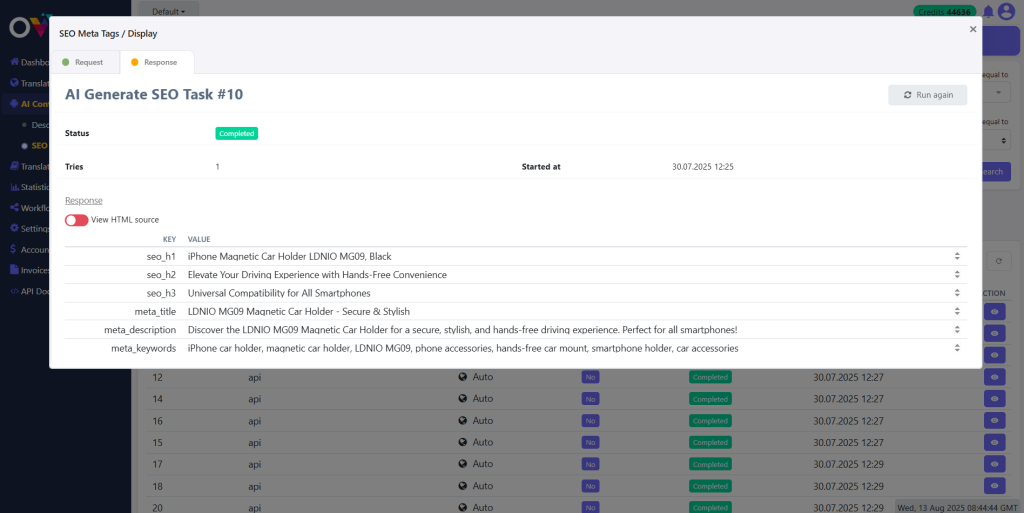
Why are meta tags important?
Meta tags are crucial for multilingual SEO because they help search engines understand which language the website uses, and to which region to show the results.
You can have your website translate to French, but if your meta tags are not updated to French, you won’t pop in results when people from France search your keywords.
For SEO meta tags the usage of credits goes up with:
- Amount of context provided for the generation of the meta tags
- The length of the generated tags
HTML tags like <h1> <section> <header> <divider>, even thought, are not translated, will still count as characters, and increase the usage.
We strongly recommend optimizing your text inputs before generating the SEO meta tags.
The accuracy and relevance of the data provided plays a key role in creating effective Meta Tags for SEO.
Ovesio AI analyzes the titles, categories, keywords and other details of the product to generate relevant H1, H2, H3, Meta Title, Meta Description and Meta Keywords optimized for the language(s) you selected.
The better structured and more detailed the data, the more relevant and optimized tags the AI can generate for search engines. Generating an extensive set of meta tags will also require more credits




